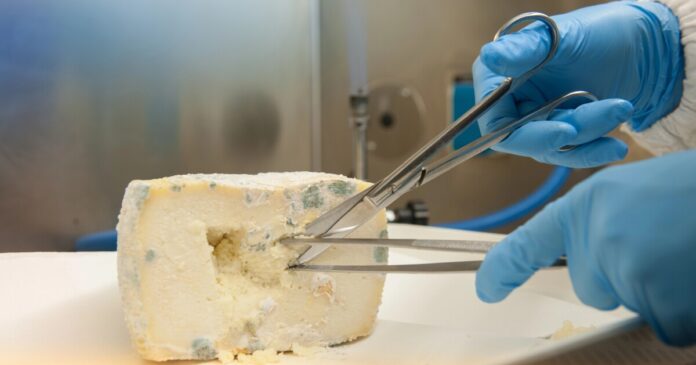A dangerous type of bird flu virus (called H5N1) continues to circulate among dairy cows in the US. The virus targets the mammary gland’s milk-secreting epithelial cells, causing painful infections in the udder. It also leads to large amounts of virus being released into the milk. This infected milk can expose other cows, pets, wild animals, and possibly humans to the virus, a potential threat beyond just the farm.
Even though heating milk (like pasteurization) can kill the bird flu virus (H5N1), many people still drink raw milk or eat raw-milk cheeses, which aren’t heated. That’s a problem because the virus can survive in raw milk kept in the fridge for up to 8 weeks. A US survey found that 4.4% of adults drink raw milk at least once a year, 1.6% drank it often, and 1.6% ate raw-milk cheeses.
In states where bird flu has been found in dairy cows, raw milk products are still sold. That means people could unknowingly be exposed to the virus through these products. Recently, people have gotten infected with bird flu (H5N1) after coming into contact with or drinking raw milk from sick cows. That’s a serious warning sign.
So researchers at Cornell University wanted to see if the virus could survive in raw-milk cheese. They used two methods: making small batches of cheese with raw milk mixed with the virus to test how long the virus remained active during cheese-making and aging. They studied real cheeses made by companies that unknowingly used milk from infected cows.
“In this study, we were specifically looking at the stability or persistence of highly pathogenic avian influenza H5N1 in raw milk cheese products,” said Diego Diel from the Department of Population Medicine and Diagnostic Sciences.
To make raw-milk cheese safer, US rules say it must be aged for at least 60 days at a cool temperature (above 35 °F/1.6 °C). This process helps kill harmful bacteria.
The study found that the bird flu virus (H5N1) can still survive in cheese, even after 120 days of aging at 39 °F (3.8 °C). That means the usual aging process might not be enough to destroy this virus.
Different cheeses have different levels of acidity, measured by pH. A pH below 7 is classified as acidic. Cheddar has a pH around 5.4, Camembert is close to 7, and Feta is very acidic, around 4.6.
In the study, cheese made from raw milk containing the bird flu virus still harbored live virus when its pH was between 5.8 and 6.6. But in cheeses with a pH of 5 or lower (more acidic), no virus was found.
To reduce the risk of bird flu contamination in raw milk cheese, experts suggest a few practical steps. One is to test the milk before making cheese and use only milk free of the virus.
Another possibility Diel suggested is heating milk at sub-pasteurization temperatures before using it, which could retain the qualities desired by the raw milk cheese industry and effectively inactivate the virus.
Researchers also fed ferrets, animals known to be highly vulnerable to the H5N1 virus, both contaminated raw milk and raw milk cheese. Some ferrets that drank the raw milk became infected, but none of the ferrets that ate the cheese got sick. This suggests that the cheese-making process might lower the risk of infection; however, more research is needed to understand why this could be the case.
Diel noted that although more study is needed, the fluid matrix of the milk might have allowed the virus to have higher contact with mucous membranes in the pharynx. In contrast, cheese products could have a lower contact time with cells in this area, making it harder for the virus to initiate an infection.
Using their model, researchers got hands-on with cheese to study bird flu. They tested small 5-gram “mini cheeses” they made in the lab, along with cheddar samples from actual dairy companies. Shockingly, all four cheddar samples tested positive for H5N1.
To make their mini cheeses, the team used raw milk mixed with the virus and added lactic acid to adjust the pH levels. This helped them create cheeses with different pH levels to understand how acidity affects the virus’s survival.
“Acidity in cheese is primarily achieved by direct acidification or by adding lactic acid bacteria cultures, which make use of lactose in the milk to form lactic acid,” said Assistant Research Professor Nicole Martin from the Department of Food Science at Cornell University. “This acid drops the pH of the milk, and depending on how far this fermentation is allowed to proceed, determines how low the pH goes.”
The results are published in Nature Medicine.
Source: Cornell University


